Introduction
Cloudflare’s free tier is extremely popular within the vCanopy community, and for good reason. One of the things we’re frequently asked about when using Cloudflare is “is it OK to use Cloudflare caching with vCanopy caching?”.
The short answer is: YES.
We rarely see any kind of issues when running Cloudflare’s proxy and free tier level caching alongside our server caching. In this article, we’ll take a look at how to check if Cloudflare is enabled on your site, what it actually caches, and when you may need to clear the Cloudflare cache.
Cloudflare’s Free Plugin
Cloudflare offers a WordPress plugin that can make managing your Cloudflare settings easier, as well as run a cache clear from within your website instead of your account. You can also utilise their excellent APO service with this plugin too.
The plugin is freely available in the WordPress plugin repository here:
Cloudflare WordPress Plugin
Cloudflare’s Free CDN Caching and vCanopy
Cloudflare have their own dedicated article on this topic that you can read here (it’s old but still worth a read), and they have their own official documentation on working with their caching. You can check out both via these links:
WHAT CLOUDFLARE CACHES
Here are the highlights:
- Cloudflare does cache common static content file extensions, including JS, CSS, all common image extensions, webfonts, common document, and media extensions. The full list can be found here.
- Cloudflare caches a website’s robot.txt
- Cloudflare only caches based on file extension and not by MIME type.
WHAT CLOUDFLARE DOES NOT CACHE
- The Cloudflare CDN does NOT cache HTML by default.
- Cloudflare does not cache the resource if the
Cache-Controlheader is set toprivate,no-store,no-cache, ormax-age=0or if there is a cookie in the response.
CLOUDFLARE PAGE RULES
The free tier also comes with 3 page rules, which you could use to implement more comprehensive caching at Cloudflare.
Caching additional content at Cloudflare requires a Cache Everything Page Rule. Without creating a Cache Everything Page Rule, dynamic assets are never cached even if a public Cache-Control header is returned. When combined with an Edge Cache TTL > 0, Cache Everything removes cookies from the origin web server response.
You can learn more here:
Create Edge Cache TTL page rules
If you do enable this, then you will need to be careful of using two layers of caching together. Unlike a DNS, server, and application firewall, which don’t conflict with one another, caching is the exact opposite, and using full page caching at both Cloudflare and the server level may interfere with one another.
You will also want to ensure that you don’t cache the /wp-admin area, and Cloudflare also caches XML responses when using Cache Everything.
How to Check if Your Website is Being Served by Cloudflare
To check whether your website is being served by Cloudflare you can check the HTTP Response headers.
To do this, head over to your website and right-click and choose “Inspect“. This will open up the developer tools and from here you can click through to the network tab:
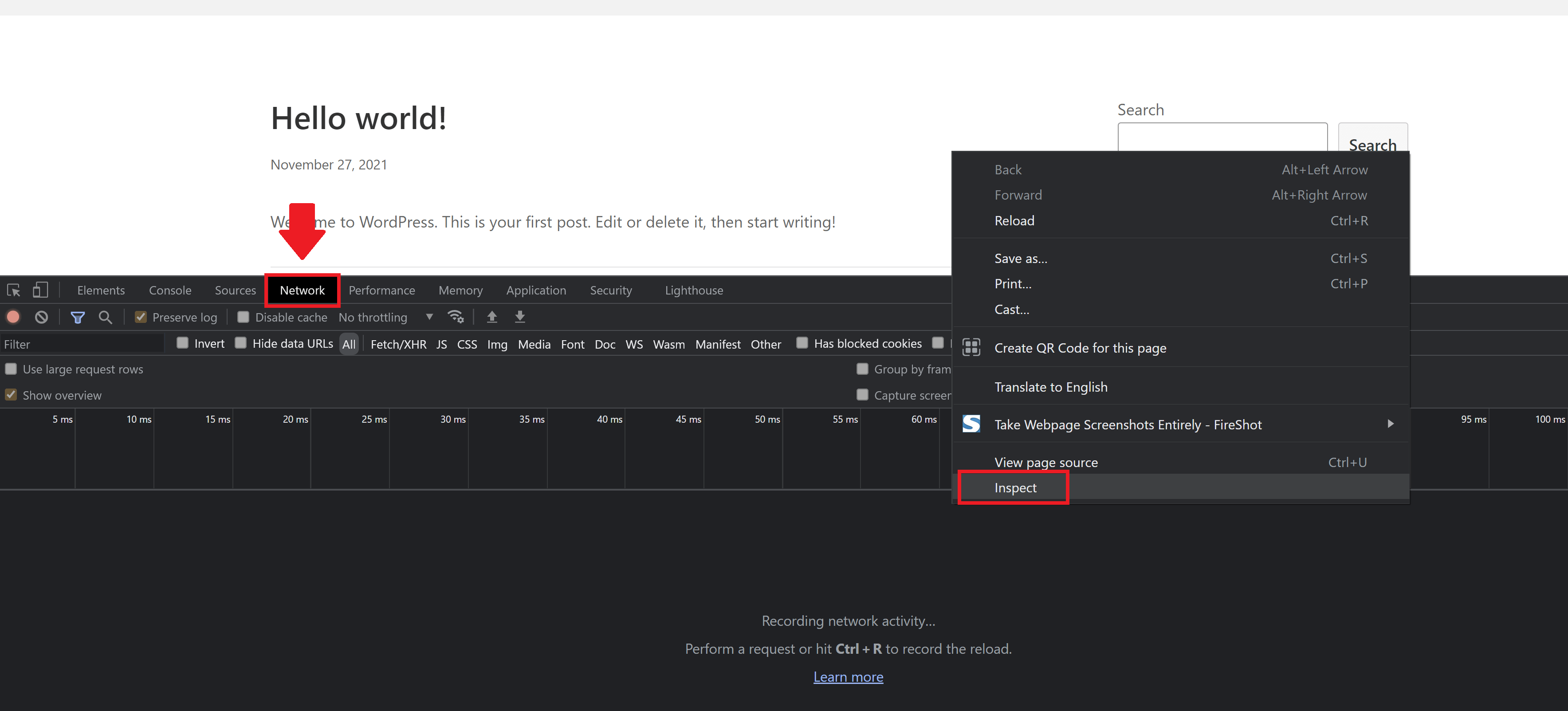
Refresh the page, and then click on the name of your website in the left-hand breakdown: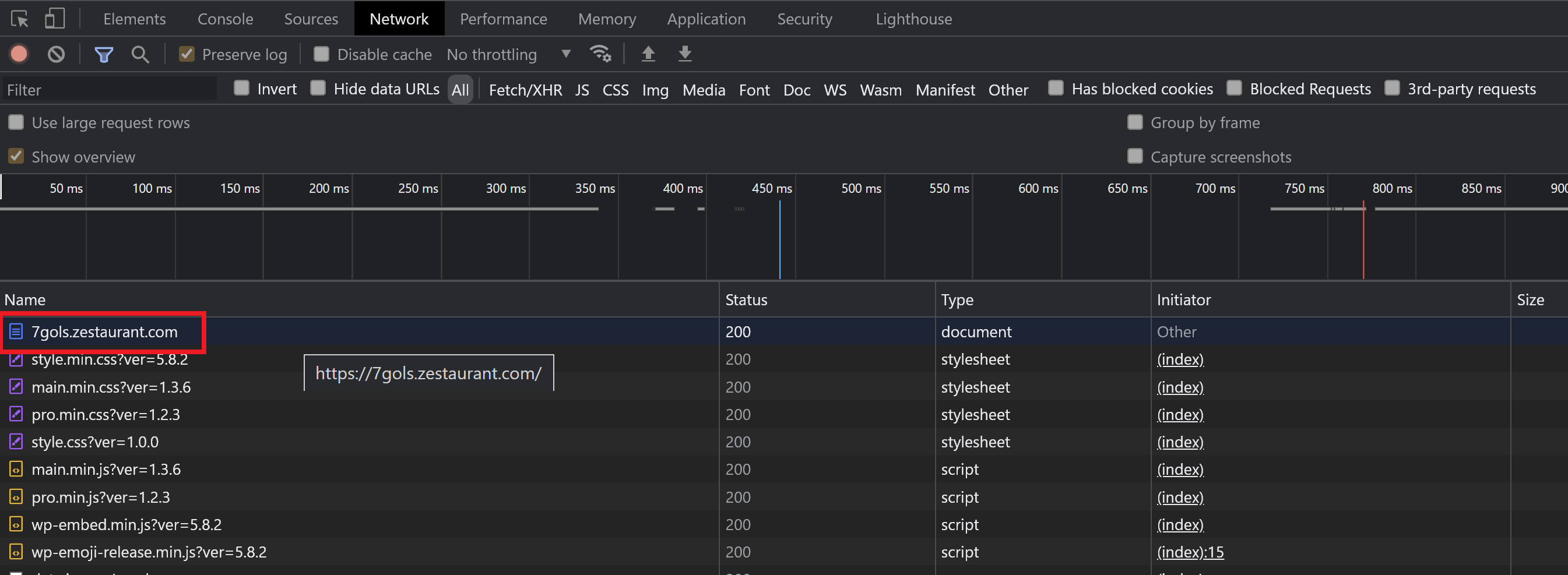
If your website is being served by Cloudflare, here you will see all of their various response headers, including their IP address, the cache status, and that the server is “Cloudflare”:
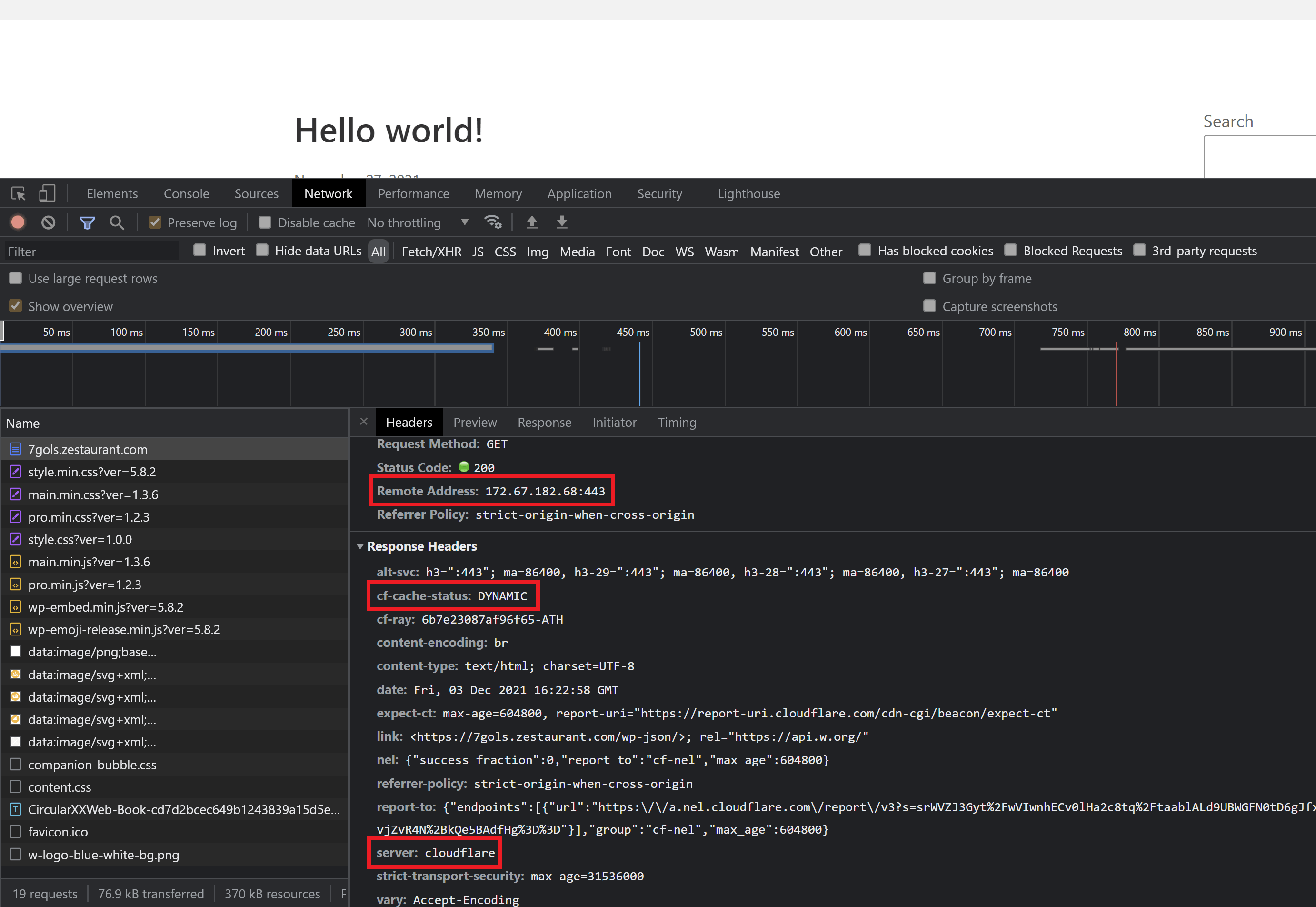
How to Check the Caching Status of Your Website
Cloudflare adds the caching status to your website’s response headers so it’s easy to tell whether a resource is being cached at and served via Cloudflare.
Still in Developer tools (see the previous section), click on a resource on the left-hand side and you’ll be able to see that resource’s status.
EXAMPLE 1: CHECK PAGE CACHING STATUS
For example, here I’m checking the page itself to see if it’s being cached:
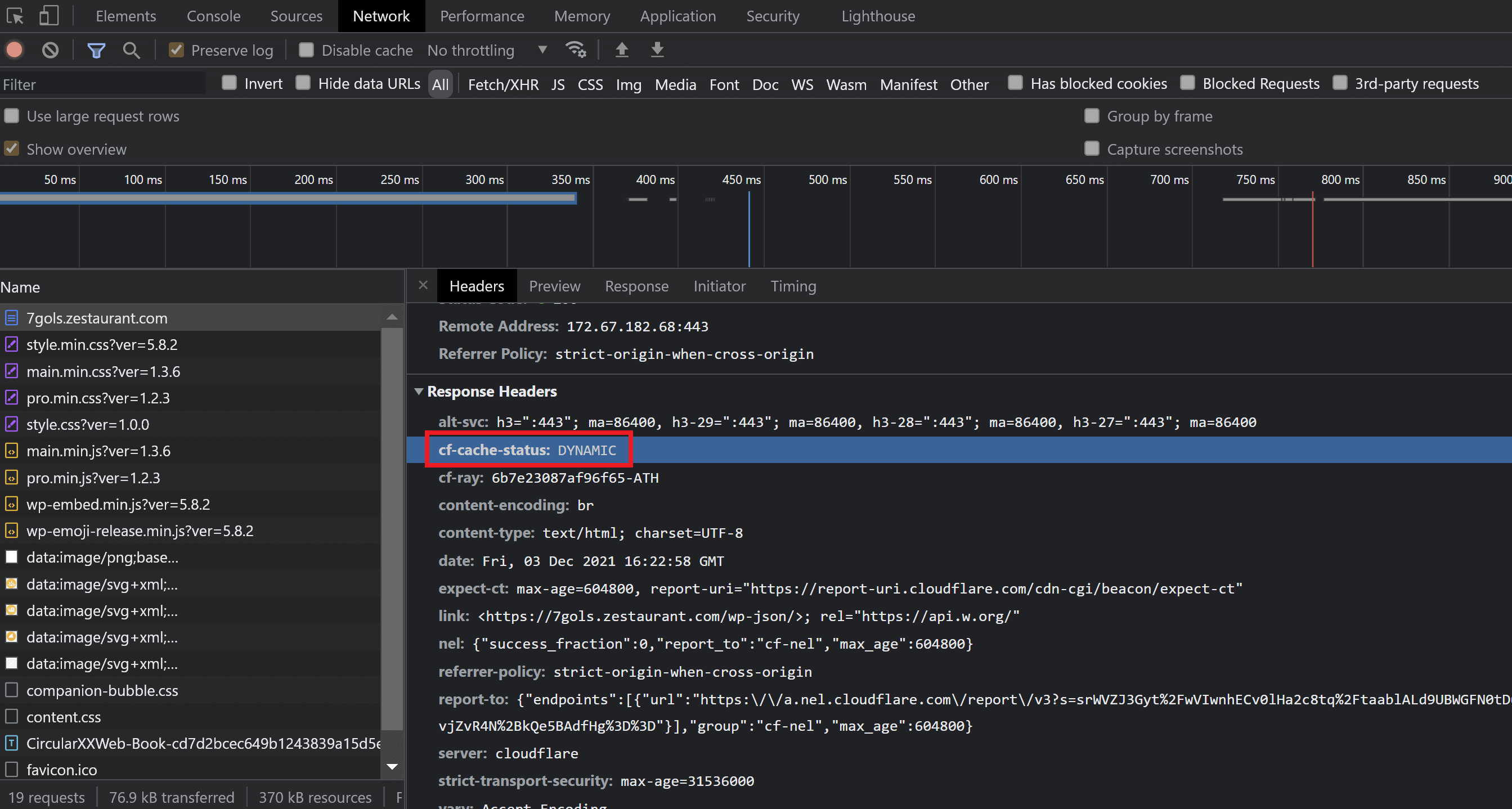
The cache response is “DYNAMIC”, which is what I’m expecting with the default Cloudflare cache options.
DYNAMIC indicates: Cloudflare does not consider the asset eligible to cache and your Cloudflare settings do not explicitly instruct Cloudflare to cache the asset. Instead, the asset was requested from the origin web server.
Here we can also see that vCanopy server-level caching is active and that the page is being served from the LiteSpeed cache:
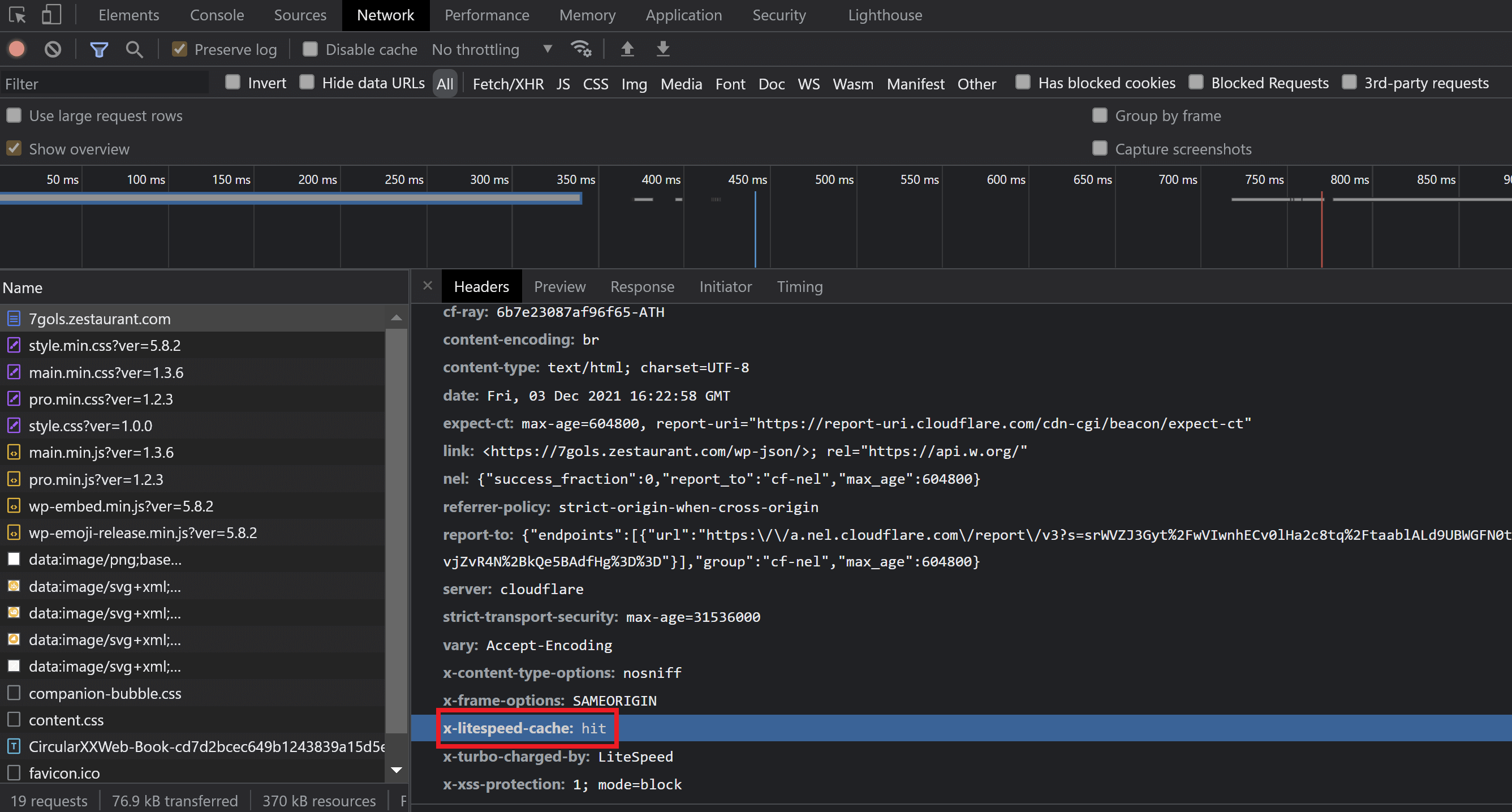
EXAMPLE 2: CHECK STYLE.CSS CACHING STATUS
Again on the left-hand side, we can see all the various resources that have been loaded. If we select the style.css file, we can see that this is being served as HIT by Cloudflare:
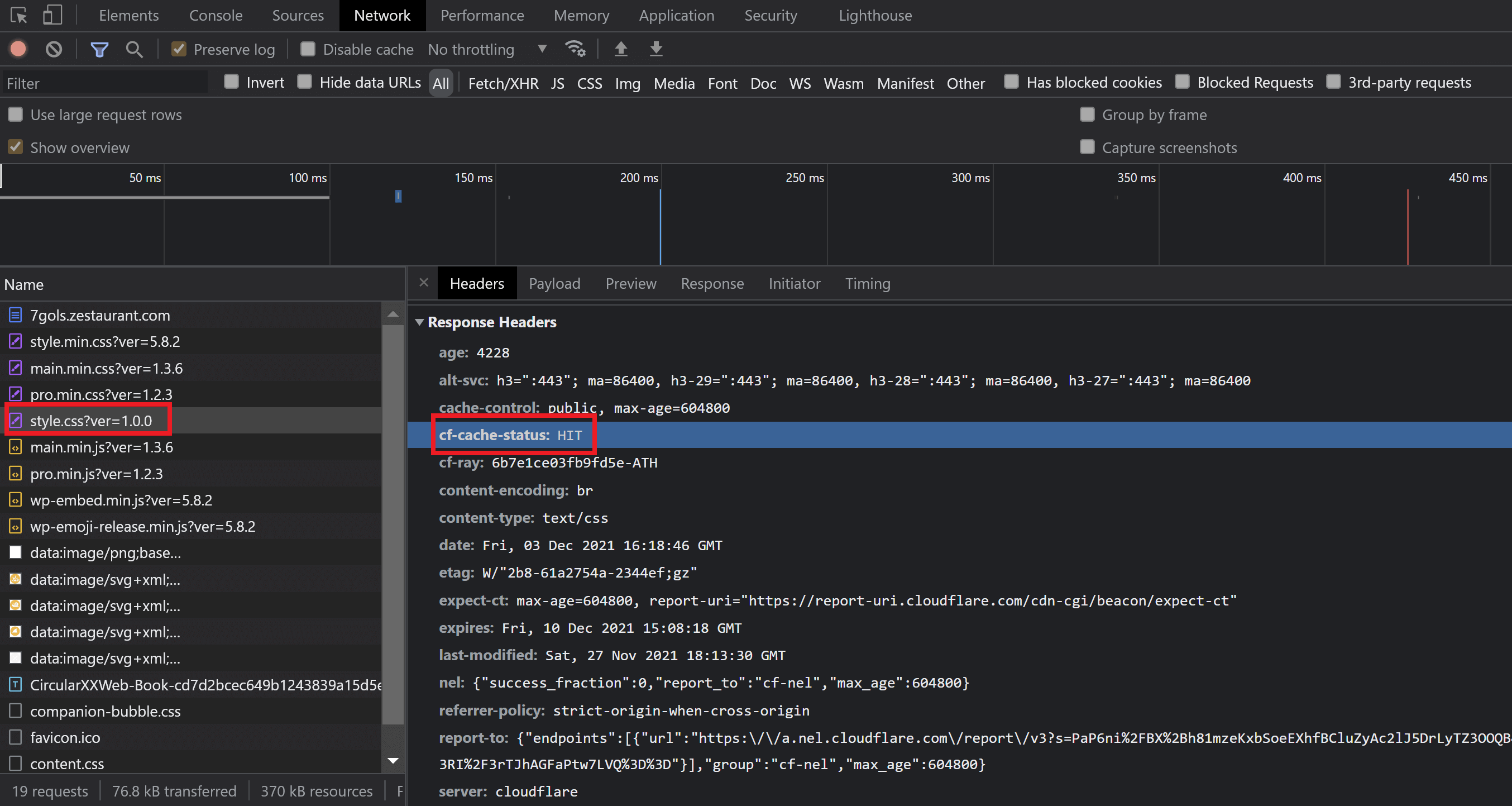
This means that the resource was found and served from Cloudflare’s cache.
Purging the Cloudflare Cache
The easiest way to purge the cache is to install the WordPress plugin which allows you to manage a variety of different settings directly inside your website.
Alternatively, inside your Cloudflare account, click through to your website, and then select Caching and then Configuration. Here you can run a cache purge:
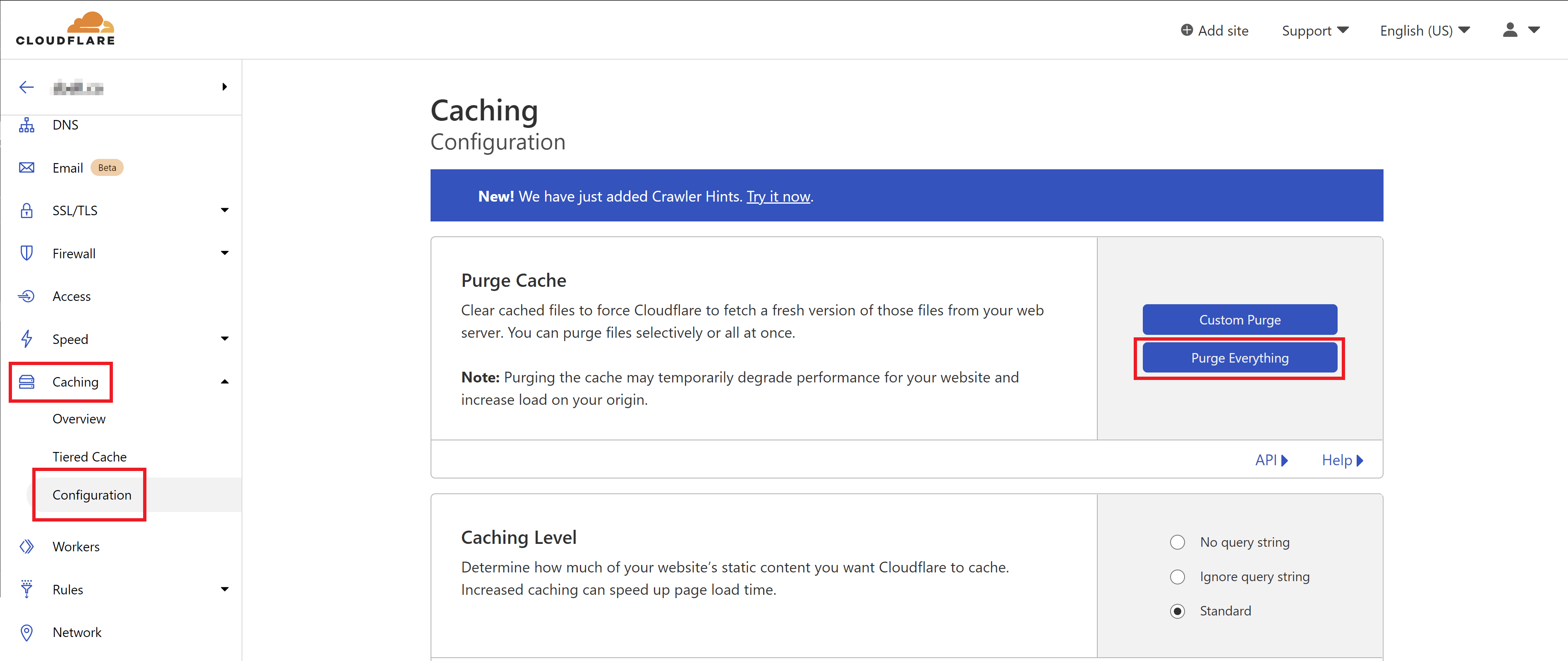
A little further down this same page, you can also enable Development Mode if you’re actively working on the website:

Further Reading
You can learn more about caching strategy and vCanopy in these articles:
And you can learn how to diagnose caching related issues here:






